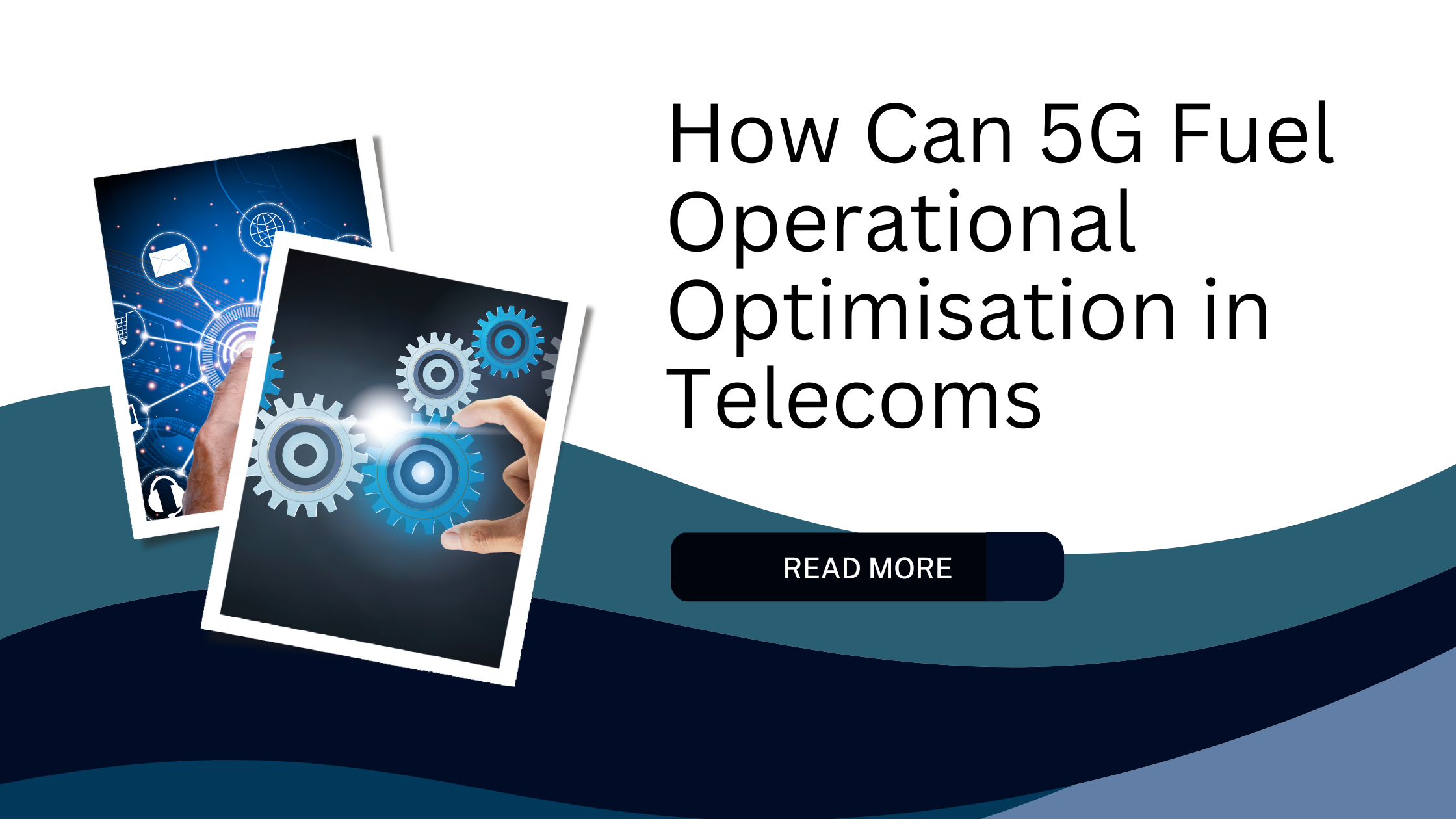The advent of 5G, the fifth generation of mobile network technology, extends beyond mere speed enhancements and improved streaming experiences. Rather, it represents a revolutionary influence, restructuring the telecommunications sector and necessitating a fundamental rethinking of operational optimisation. To fully harness the capabilities of 5G, telecom operators must adopt inventive approaches that optimise not only their networks but also their processes and resource utilisation, recognising the imperative for a comprehensive transformation to realise the full potential of this advanced technology.
Demystifiying the 5G Operational Landscape
5G’s defining characteristics – ultra-low latency, high bandwidth, and massive network capacity – open up a world of possibilities. Network slicing, for example, allows operators to carve out virtual networks tailored for specific use cases, from ultra-reliable low-latency communication for autonomous vehicles to high-bandwidth data streams for augmented reality experiences. This granularity empowers operators to optimise resource allocation, catering to diverse demands without compromising performance.
Furthermore, 5G’s inherent intelligence paves the way for automation and AI-driven optimisation. Real-time data analysis can identify network bottlenecks, predict potential issues, and trigger automated adjustments, minimising downtime and ensuring seamless performance. This self-healing network eliminates the need for manual intervention, reducing operational costs and maximising efficiency.
Enhancing Efficiency Across the Value Chain
The impact of 5G extends beyond the core network. Here’s how it can optimise key operational areas:
1. Network Planning and Deployment:
- Data-driven site selection: Utilising AI to analyse user data and predict traffic patterns, operators can optimise cell tower placement, ensuring coverage and capacity where it’s needed most.
- Dynamic spectrum allocation: 5G’s flexible spectrum allows operators to adapt to real-time demand, allocating resources efficiently and preventing bottlenecks.
- Predictive maintenance: AI can analyse network equipment data to identify potential failures and schedule preventive maintenance, minimising downtime and ensuring service continuity.
2. Customer Experience:
- Personalised network experiences: 5G enables operators to tailor network parameters based on individual user needs and preferences, delivering a truly customised experience.
- Proactive problem resolution: AI-powered analytics can anticipate customer issues and trigger proactive interventions, minimising service disruptions and improving satisfaction.
- Enhanced self-service capabilities: 5G’s higher bandwidth facilitates the development of intuitive and interactive self-service platforms, empowering customers to manage their accounts and resolve issues independently.
3. Cost Optimisation:
- Automation and reduced manual intervention: AI-driven network management and self-healing capabilities can significantly reduce the need for manual labour, leading to substantial cost savings.
- Energy-efficient network infrastructure: 5G technologies like network slicing and dynamic resource allocation can optimise energy consumption, reducing operational expenses and environmental impact.
- Improved asset utilisation: Precise network insights and predictive maintenance allow for better planning and resource utilisation, maximising the value of existing infrastructure.
Essential Tools to Fine-Tune 5G
There are an array of cutting-edge technologies that play a crucial role in orchestrating the 5G experience:
- Artificial Intelligence (AI) and Machine Learning (ML): These game-changers analyse network data in real-time, predicting and preventing outages, optimising resource allocation, and dynamically adjusting network parameters for optimal performance.
- Network Automation: Repetitive tasks such as configuration management and infrastructure provisioning can be automated, freeing up valuable resources for strategic initiatives and improving operational efficiency.
- Software-Defined Networking (SDN): This virtualised approach enables granular control over network resources, making it easier to adapt to changing traffic patterns and implement new services rapidly.
- Cloud-Native Network Functions (CNFs): Deploying network functions as cloud-based micro services offers agility and scalability, as well as a reduction in relying on expensive hardware infrastructure.
- The Internet of Things (IoT): Integrating sensors and devices across the network provides real-time data about network performance, allowing for proactive and targeted optimisation efforts.
Navigating the Complexities of Operational Optimisation
The hurdles in rolling out 5G technology can be looked at in different ways. For consumers, the hesitation might stem from the lack of suitable devices or affordable 5G plans. On the other hand, businesses point to infrastructure as their primary challenge in adopting 5G technology. Meanwhile, telecommunications experts identify virtualisation as their main roadblock [1]. It is evident that embarking on the journey to optimisation comes with its fair share of challenges. However, the solutions aren’t too far-reaching:
- Skills Gap: Successfully implementing and managing cutting-edge technologies requires a workforce with updated skills and expertise, posing a need for comprehensive training programs and skill development initiatives.
- Integration Challenges: Seamlessly integrating various systems and technologies can be intricate, demanding a thoughtful approach and strategic planning to ensure a smooth amalgamation of disparate components.
- Security Concerns: Safeguarding 5G networks against an expanded attack surface requires robust cybersecurity measures. Prioritising and implementing comprehensive security protocols is essential to protect against evolving threats.
- Standardisation Hurdles: The dynamic nature of 5G standards necessitates agility and adaptability to accommodate future changes. Staying informed about evolving standards and implementing flexible solutions is crucial to navigate the ever-changing landscape.
Fostering collaboration with technology vendors becomes imperative to overcome these challenges. Investing in workforce training programs ensures that the team is equipped with the necessary skills. Furthermore, adopting open-source solutions can provide the required flexibility and support to navigate the operational minefield on the path to optimisation successfully.
Conclusion
Operational optimisation in the telecom industry is a continuous journey fuelled by constant innovation and adaptation. 5G is clearly a powerful force reshaping the telecom landscape. But, to make the most of it, we need to optimise how everything works together. By embracing smart technologies, upskilling the workforce, and fostering collaboration, telecom operators can transform their networks into agile, efficient, and profitable engines of innovation, paving the way for a hyper-connected future. This journey requires not just technical prowess but also a strategic vision, a commitment to continuous improvement, and a willingness to embrace the transformative power of 5G.
[1] https://financesonline.com/5g-statistics/









